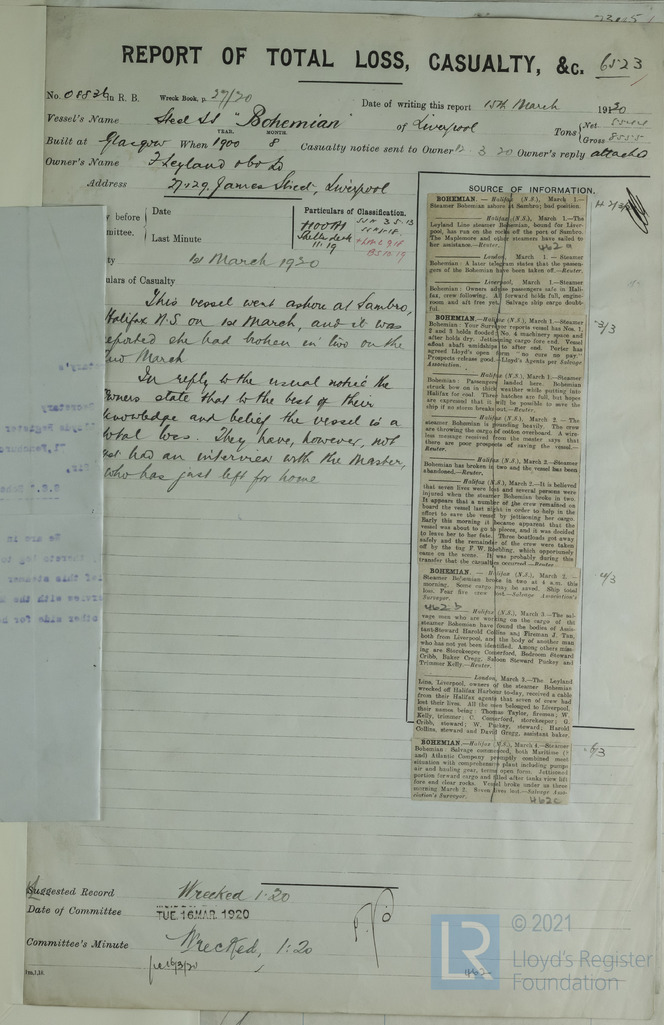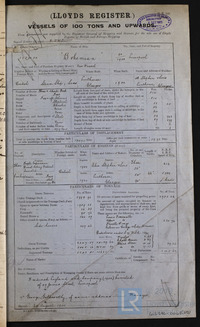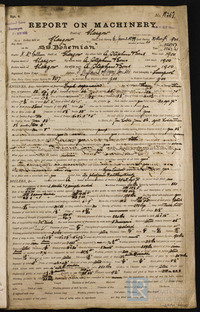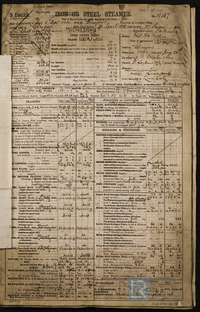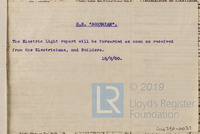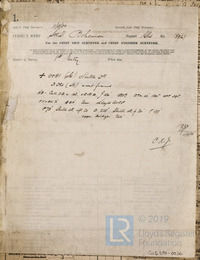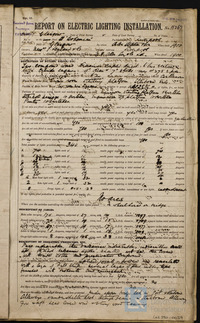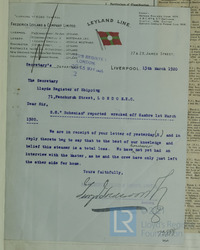- Related documents Related
- Full details Details
- Report document? Report?
Use the data export button to extract customised data sets from the Ship Plan and Survey Report Collection. Available in TSV and CSV formats.
Date recorded as the time of writing.
15/03/1920
The year in which a vessel’s construction is completed.
1900
The individual and/or organisation listed as having been responsible for constructing the vessel. This can/may be the same as the owner and/or manager.
Alexander Stephen & Sons
The name of the yard where the vessel was built.
Linthouse
A unique number allocated to a specific vessel by an official registration authority of the country of registry (flag) that the vessel belongs to (post. 1855).
113400
Official administrative title (often printed) of a record used by Lloyd’s Register or external organisations.
Report of Total Loss, Casualty, &c./ Wreck reports
The individual and/or organisation listed
F Leyland & Co Ltd
The name of the port/place from which a vessel’s voyage originated.
Boston
The name of the port/place of destination given.
Liverpool
A vessel’s means of propulsion.
Steam
System of measurement that replaced ‘Builder’s Old Measurement’, taking a vessel’s internal capacity as the standard. Vessels built between 1836 and 1854 were legally required to display both tonnages.
8555
Tonnage derived by deducting from the gross register tonnage the capacity that in unavailable for cargo, e.g. machinery space, fuel, crew accommodation etc.
5544
Location of construction for a vessel’s engines.
Glasgow
Confirmation as to whether the vessel was equipped with refrigeration machinery to aid in the transport of frozen or chilled cargo/goods.
No
Does the vessel possess an auxiliary power source?
No
Is electric lighting fitted to the vessel?
No
Recorded information relating the specific cargo being conveyed.
cotton
Also referred to as extreme breadth. The distance from the extreme starboard side to the extreme port side.
58.2
Physical extent of a record.
1
Name of ship as recorded on the record
Bohemian
The process of transferring a vessel to water, but not necessarily her completion.
28/06/1900
Unique identifier for a given ship, it is assigned by a builder.
386
The port or place in which the vessel’s construction took place, at the time of writing.
Glasgow
Unique internal numbers used for identifying, referring and retrieving a specific survey report.
6523
Records that constitute Lloyd’s Register’s first official encounters with a specific vessel, e.g. a survey report.
N
Classification symbol assigned to a vessel by Lloyd’s Register’s Classing Committee denoting the quality of construction and maintenance.
+100A1 shelter deck 11.19
Recorded information related to a vessel’s movements.
Boston; Sambro
Broad categories and subdivisions of vessels related to their purpose or function.
Passenger; Cargo
Is the steamer assisted by sail?
No
A ship’s total internal capacity of a ship measured in register tons from the top of the floors to the tonnage deck.
7958
Type and configuration of the engine(s) supplied for a vessel.
Triple Expansion 3 Cylinders
Alexander Stephens & Sons Ltd
Is machinery fitted at the aft of the vessel?
No
Generally a smaller additional auxiliary boiler (often used while the vessel is at port).
No
Name of the Proving House responsible for the public testing and certification of a vessel’s anchors and/or chain cables.
No
Prescribed by flag/registration authorities, and usually excludes a small part of the stern. It is measured from the foreside of the stern at the extreme top to the afterside of the stern post.
512
Measurement from the underside of the upper deck on the centre line to the upper side of the bottom plating.
34.3
Pertinent, useful or interesting recorded content.
Seven men lost: Thomas Taylor, fireman; W Kelly, trimmer; C Comerford, storekeeper; G Cribb, steward; W Puckey, steward; Harold Collins, steward and David Gregg, baker. All from Liverpool.
Report an issue with this document
Have you noticed missing or incorrect data or images for this document?
Please let us know and we will rectify the issue as soon as possible.

